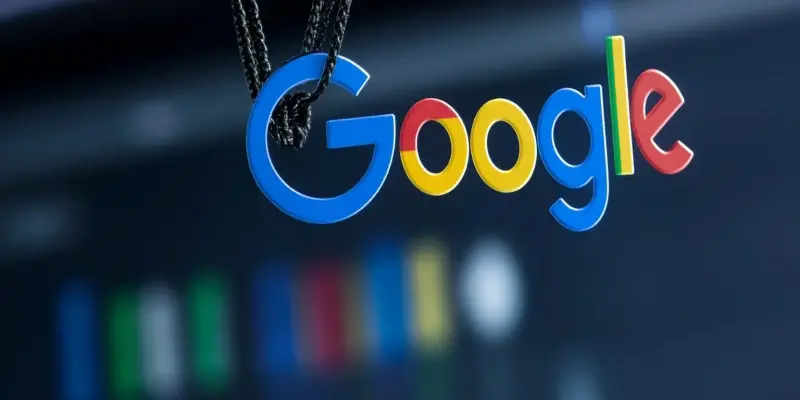In an era where digital security is paramount, cybercriminals are continually devising novel methods to exploit widely-used tools for launching sophisticated phishing attacks. Google’s popular applications, particularly Google Calendar and Google Drawings, have recently found themselves at the forefront of these schemes. With over 500 million users globally, Google Calendar’s extensive reach makes it an attractive target for cybercriminals who utilize its features to create deceptive and seemingly legitimate invitations.
The Evolution of Phishing Tactics
Initial Phishing Strategies Using Google Forms
Initially, cybercriminals leveraged Google Calendar invites to direct unaware users to malicious Google Forms. These seemingly innocuous invites mimicked genuine contacts, making it difficult for recipients to distinguish between legitimate and fraudulent communications. The primary goal was to trick individuals into divulging sensitive information, which could then be used for fraudulent activities such as identity theft and unauthorized financial transactions.
As cybersecurity measures advanced, these malicious actors had to evolve their tactics. Google Forms, once a prominent tool in their arsenal, became less effective as users and systems grew more adept at detecting such threats. Yet, the quest for ill-gotten data was far from over, leading cybercriminals to explore other avenues within Google’s suite of tools.
Shift to Google Drawings for Deception
Adapting to heightened security around Google Forms, cybercriminals soon shifted their focus to Google Drawings. These new phishing emails often included links that disguised themselves as urgent action items, such as fake reCAPTCHA buttons, compelling users to click on them. Instead of filling out a form, users were now being redirected to meticulously crafted fraudulent websites, masquerading as cryptocurrency or bitcoin support pages.
These fraudulent sites, designed with high precision, would prompt users to enter personal details or payment information, leading to the theft of sensitive data. The attackers employed sophisticated strategies, knowing that the appearance of urgency, coupled with the trust users placed in Google’s ecosystem, would increase click-through rates. This evolution in tactics underscores a pressing need for advanced security measures by both individuals and organizations.
Combating Sophisticated Phishing Threats
Organizational Security Measures
Organizations must adopt stringent cybersecurity measures to combat these evolving phishing tactics. One effective strategy involves the implementation of advanced email security solutions, such as Harmony Email & Collaboration. This tool helps monitor and secure email communications, preventing malicious links and attachments from reaching end users. Additionally, organizations should keep a close watch on third-party Google apps, ensuring no unauthorized or suspicious activities go unnoticed.
Multi-factor authentication (MFA) is another critical element in strengthening security. By requiring multiple forms of verification before granting access to sensitive information, MFA significantly reduces the likelihood of unauthorized access. Given that phishing attacks often rely on obtaining login credentials, multi-factor authentication adds a robust layer of protection.
Individual Precautions and Google’s Recommendations
Individuals, too, have a role to play in maintaining cybersecurity. Users are encouraged to meticulously scrutinize unexpected Calendar invites, looking for signs of deception. Hovering over links to verify their legitimacy before clicking is a simple yet effective practice. Enabling two-factor authentication (2FA) can provide an additional layer of security, ensuring that even if credentials are compromised, unauthorized access remains difficult.
Google has also offered recommendations to enhance user security. Activating the “known senders” setting within Google Calendar provides notifications about invitations from unknown contacts, allowing users to exercise caution. As phishing tactics continue to evolve, prioritizing email and collaboration security will be crucial in the coming years for protecting valuable personal and corporate information.
The Future of Cybersecurity and Email Safety
Importance of Ongoing Vigilance
The landscape of cybersecurity is dynamic, with threats constantly evolving as attackers develop more sophisticated methods. For both users and organizations, vigilance remains the cornerstone of effective defense against phishing attacks. Proactive measures, including regular updates to security protocols and continuous education about emerging threats, will be essential in mitigating risks.
Collaborative Measures for Enhanced Security
In today’s world, where digital security is of utmost importance, cybercriminals are constantly coming up with new ways to exploit popular tools for sophisticated phishing attacks. Google’s widely-used applications, especially Google Calendar and Google Drawings, have recently become prime targets in these schemes. With a user base exceeding 500 million globally, Google Calendar’s extensive reach makes it particularly appealing to cybercriminals. They take advantage of its features to create deceptive and seemingly legitimate invitations, tricking users into engaging with malicious content. This exploitation is concerning because it uses trusted platforms that people rely on every day, making the deceit harder to detect. Users are often unaware that these seemingly helpful tools can be manipulated for fraudulent purposes, leading to potential data breaches and other security risks. Given the increasing frequency and sophistication of these attacks, it is crucial for users to stay vigilant and for developers to continually enhance security measures to protect against these evolving threats.

